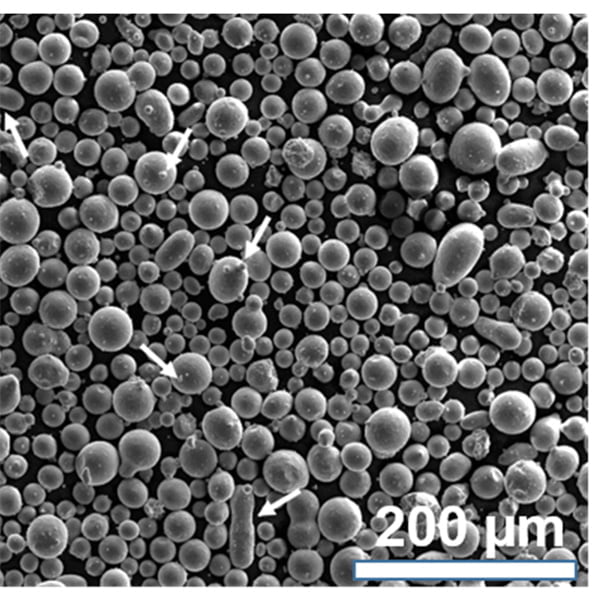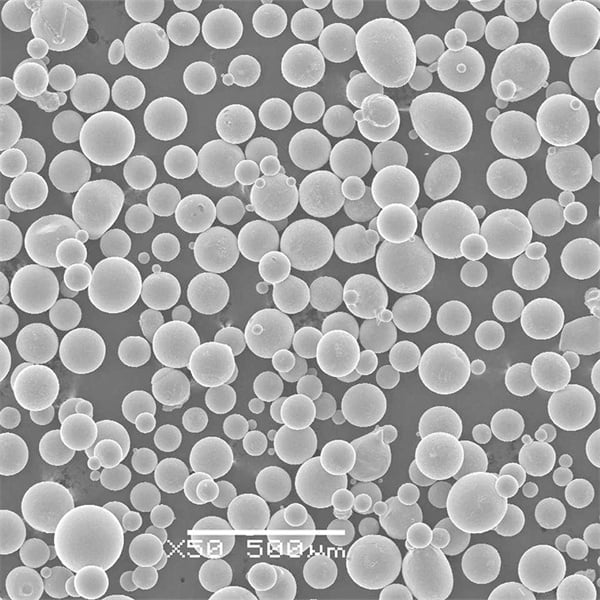Wear Resistance Powder
Table of Contents
Wear resistance powder is an essential material used in various industries to enhance the durability and lifespan of components subject to wear and abrasion. This comprehensive guide will delve into everything you need to know about wear resistance powder, including its types, applications, and benefits. We’ll explore specific metal powder models, provide detailed tables for better understanding, and conclude with an FAQ section to address common queries.
Overview of Wear Resistance Powder
Wear resistance powders are specialized materials designed to improve the wear resistance of surfaces. These powders are often used in coatings, welding, and thermal spray processes to create hard, wear-resistant layers on various substrates. The primary goal is to extend the service life of components by reducing wear and tear.
Key Details:
- Purpose: Enhance wear resistance of surfaces
- Applications: Coatings, welding, thermal spray processes
- Benefits: Increased durability, extended component lifespan, reduced maintenance costs

Types of Wear Resistance Powder
There are various types of wear resistance powders, each with unique compositions and properties. Below, we’ll detail some of the most common and effective metal powder models used for wear resistance.
| Powder Model | Composition | Properties | Characteristics |
|---|---|---|---|
| Tungsten Carbide | WC | Extremely hard, high melting point | Exceptional wear resistance, toughness |
| Chromium Carbide | Cr3C2 | High hardness, oxidation resistance | Good corrosion resistance, stable at high temperatures |
| Titanium Carbide | TiC | High hardness, thermal conductivity | Excellent abrasive wear resistance |
| Cobalt-Chromium | Co-Cr | High wear and corrosion resistance | Durable, used in medical implants |
| Iron-Chromium | Fe-Cr | Cost-effective, good hardness | Suitable for various industrial applications |
| Molybdenum Carbide | Mo2C | High melting point, good thermal stability | Effective in extreme environments |
| Nickel-Chromium | Ni-Cr | High toughness, oxidation resistance | Versatile, used in high-temperature applications |
| Boron Carbide | B4C | Extremely hard, lightweight | Superior hardness, low density |
| Silicon Carbide | SiC | High thermal conductivity, hardness | Excellent wear resistance, lightweight |
| Stellite Alloys | Co-Cr-W (Cobalt, Chromium, Tungsten) | High wear and corrosion resistance | Durable in harsh environments |
Applications of Wear Resistance Powder
Wear resistance powders find applications across a broad range of industries. Here are some of the key uses:
| Application | Description |
|---|---|
| Automotive | Used in engine components, brake discs, and transmission parts to enhance durability and lifespan. |
| Aerospace | Applied to turbine blades, landing gear, and other critical components for wear and corrosion resistance. |
| Mining | Utilized in drilling equipment, conveyor belts, and crushers to withstand harsh conditions. |
| Medical | Coatings for orthopedic implants and surgical instruments to improve longevity and biocompatibility. |
| Oil & Gas | Used in drilling tools, valves, and pumps to resist wear in challenging environments. |
| Industrial Machinery | Enhances the durability of cutting tools, gears, and bearings in manufacturing processes. |
| Construction | Applied to concrete mixers, bulldozer blades, and other heavy machinery to extend service life. |
Specifications, Sizes, Grades, Standards
Understanding the specifications, sizes, grades, and standards of wear resistance powders is crucial for selecting the right material for your needs.
| Specification | Details |
|---|---|
| Sizes | Available in various particle sizes, typically ranging from nanometers to micrometers. |
| Grades | Classified based on hardness, composition, and intended application (e.g., industrial, medical). |
| Standards | Conform to international standards such as ASTM, ISO, and AMS for quality and performance consistency. |
Suppliers and Pricing Details
Several suppliers offer wear resistance powders, each with varying pricing based on quality, composition, and quantity.
| Supplier | Product Range | Pricing (per kg) | Notes |
|---|---|---|---|
| H.C. Starck | Tungsten Carbide, Chromium Carbide | $100 – $500 | High-quality powders for industrial use. |
| Kennametal | Titanium Carbide, Boron Carbide | $150 – $600 | Diverse range, premium quality. |
| Sandvik | Nickel-Chromium, Stellite Alloys | $200 – $700 | Specialized in high-performance powders. |
| Praxair Surface Technologies | Cobalt-Chromium, Molybdenum Carbide | $250 – $800 | Advanced coatings and powders. |
| Oerlikon Metco | Iron-Chromium, Silicon Carbide | $120 – $550 | Broad selection for various industries. |
Advantages of Wear Resistance Powder
Wear resistance powders offer numerous benefits that make them indispensable in many industries.
- Increased Durability: Significantly extends the lifespan of components by reducing wear and abrasion.
- Cost-Effective: Reduces the need for frequent replacements and maintenance, lowering overall costs.
- Enhanced Performance: Improves the efficiency and reliability of machinery and equipment.
- Versatility: Suitable for a wide range of applications, from automotive to aerospace to medical.
Disadvantages of Wear Resistance Powder
While wear resistance powders are highly beneficial, they also come with some drawbacks.
- Cost: High-quality powders can be expensive, increasing the initial investment.
- Complex Application: Applying these powders often requires specialized equipment and expertise.
- Limited Flexibility: Some powders are best suited for specific applications, limiting their versatility in certain scenarios.
Comparing Wear Resistance Powders
Comparing different wear resistance powders helps in selecting the best material for your needs.
| Powder Model | Advantages | Disadvantages |
|---|---|---|
| Tungsten Carbide | Extremely hard, exceptional wear resistance | Expensive, requires specialized equipment |
| Chromium Carbide | High hardness, good corrosion resistance | Less tough compared to tungsten carbide |
| Titanium Carbide | Excellent abrasive wear resistance, high thermal conductivity | Can be brittle in some applications |
| Cobalt-Chromium | Durable, high wear and corrosion resistance | High cost, limited to specific medical and industrial uses |
| Iron-Chromium | Cost-effective, good hardness | Lower wear resistance compared to more expensive powders |
| Molybdenum Carbide | Effective in extreme environments | Can be more expensive, requires careful handling |
| Nickel-Chromium | Versatile, high toughness and oxidation resistance | Expensive, may require specialized application processes |
| Boron Carbide | Superior hardness, low density | Very expensive, limited availability |
| Silicon Carbide | Excellent wear resistance, lightweight | Can be less durable in high-impact applications |
| Stellite Alloys | High wear and corrosion resistance | Expensive, typically used in specialized applications |

FAQ
Here are some frequently asked questions about wear resistance powders to help clarify any doubts.
| Question | Answer |
|---|---|
| What is wear resistance powder? | Wear resistance powder is a material used to enhance the wear resistance of surfaces, extending their lifespan. |
| What are the common types of wear resistance powders? | Common types include Tungsten Carbide, Chromium Carbide, Titanium Carbide, and Stellite Alloys, among others. |
| Where are wear resistance powders used? | They are used in various industries such as automotive, aerospace, mining, medical, oil & gas, and construction. |
| What are the benefits of using wear resistance powders? | Benefits include increased durability, cost-effectiveness, enhanced performance, and versatility in applications. |
| Are there any disadvantages to using wear resistance powders? | Yes, they can be expensive, require specialized application, and may have limited flexibility for certain uses. |
| How do I choose the right wear resistance powder? | Consider factors like the specific application, required properties, and cost. Consult with suppliers for expert advice. |
| Can wear resistance powders be used in medical applications? | Yes, certain powders like Cobalt-Chromium are used in medical implants and surgical instruments. |
| What is the cost of wear resistance powders? | Prices vary based on composition and quality, ranging from $100 to $800 per kg. |
| How are wear resistance powders applied? | They are typically applied using thermal spray processes, welding, or coating techniques. |
| What standards do wear resistance powders conform to? | They conform to international standards such as ASTM, ISO, and AMS for quality and performance consistency. |
Conclusion
Wear resistance powders play a crucial role in extending the lifespan and enhancing the performance of various components across multiple industries. By understanding the different types, applications, and benefits, you can make informed decisions to meet your specific needs. Whether you’re in
automotive, aerospace, or medical fields, selecting the right wear resistance powder can lead to significant improvements in durability and efficiency.
Investing in high-quality wear resistance powders, despite the initial costs, can save you time and money in the long run by reducing maintenance and replacement needs. With the information provided in this guide, you’re well-equipped to choose the best wear resistance powder for your application.
Share On
MET3DP Technology Co., LTD is a leading provider of additive manufacturing solutions headquartered in Qingdao, China. Our company specializes in 3D printing equipment and high-performance metal powders for industrial applications.
Inquiry to get best price and customized Solution for your business!
Related Articles
About Met3DP
Recent Update
Our Product
CONTACT US
Any questions? Send us message now! We’ll serve your request with a whole team after receiving your message.

Metal Powders for 3D Printing and Additive Manufacturing
COMPANY
PRODUCT
cONTACT INFO
- Qingdao City, Shandong, China
- [email protected]
- [email protected]
- +86 19116340731

















